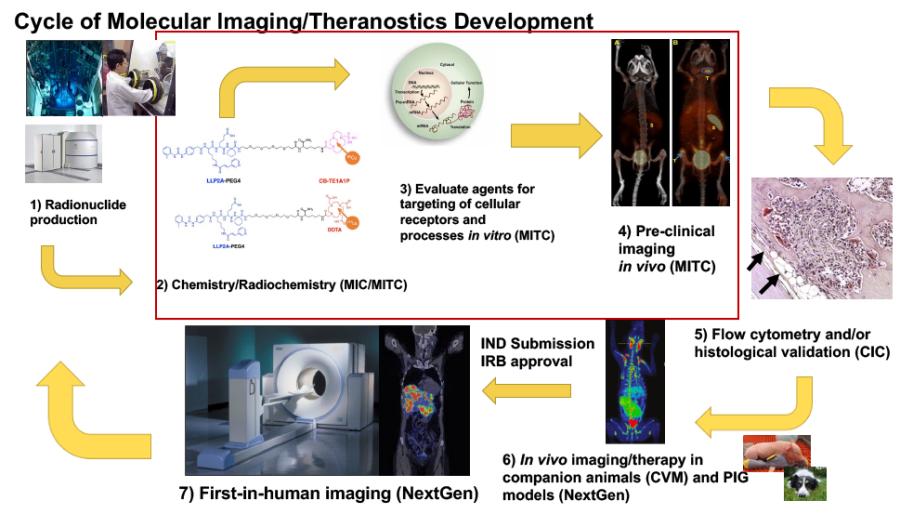
Molecular Imaging is a field that lies at the intersection of molecular biology and medical imaging. As personalized medicine and precision health have become the basis for treating patients in the 21st century, a critical component of these initiatives is the ability to non-invasively visualize the molecular basis of disease and how it changes upon treatment.
How is it used?
Over the past few decades, molecular imaging has been realized into clinical practice with the FDA approval of fluorine-18-labeled fluoro-deoxyglucose (FDG) for positron emission tomography (PET) imaging of several types of cancer and Alzheimer’s disease. Additionally, a handful of other PET agents have been approved for imaging cancer and neurological diseases (e.g., 68Ga-dotatate; three 18F-labeled agents for Alzheimer’s disease). In addition to PET scans, Molecular Imaging is used in SPECT scans and MRIs.
Future of Molecular Imaging
However, progress thus far into the clinical arena is the tip of the iceberg. Molecular imaging can enhance drug development, early diagnosis, and monitor early response to treatment for a multitude of diseases, and research in this area is needed.